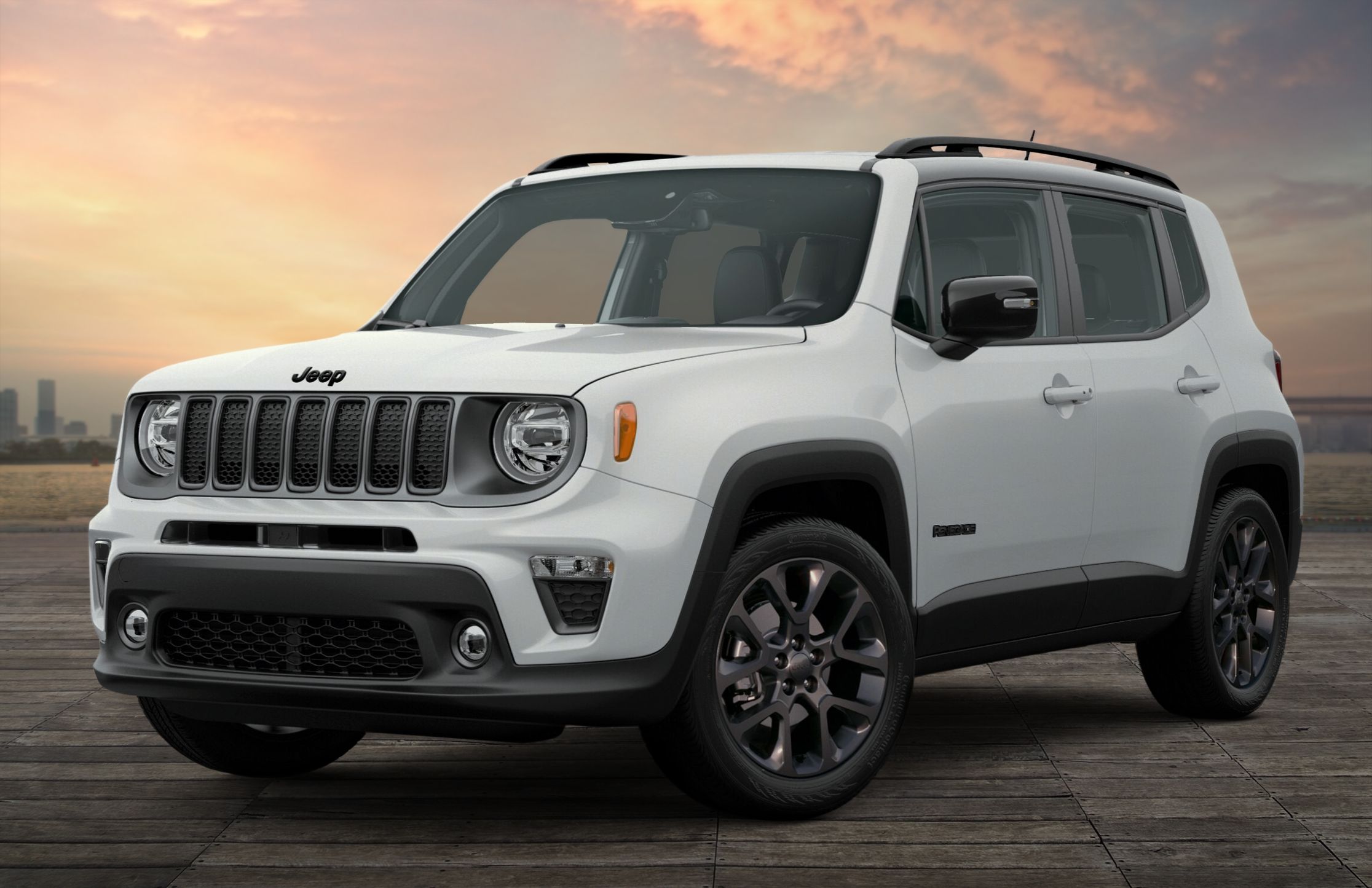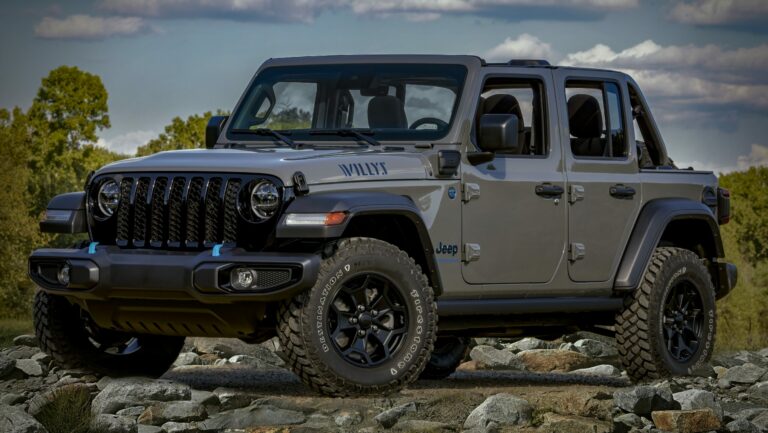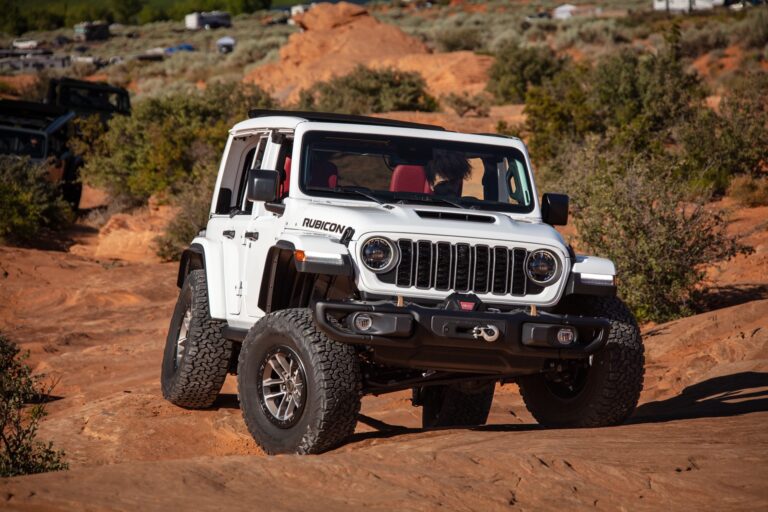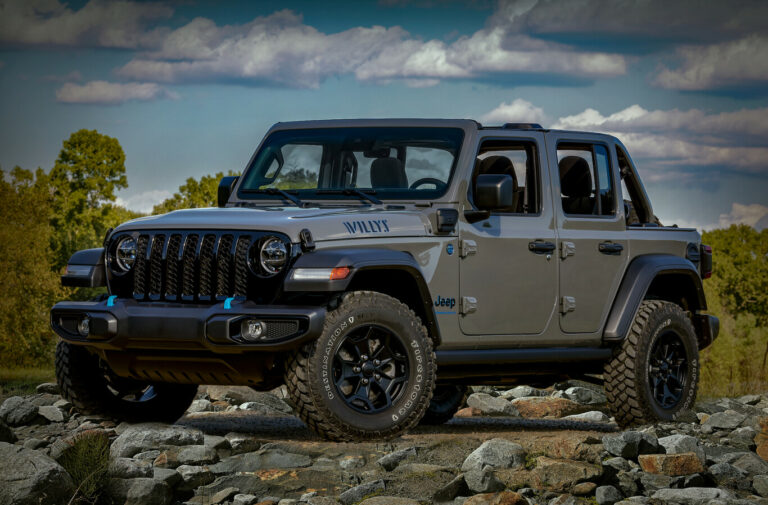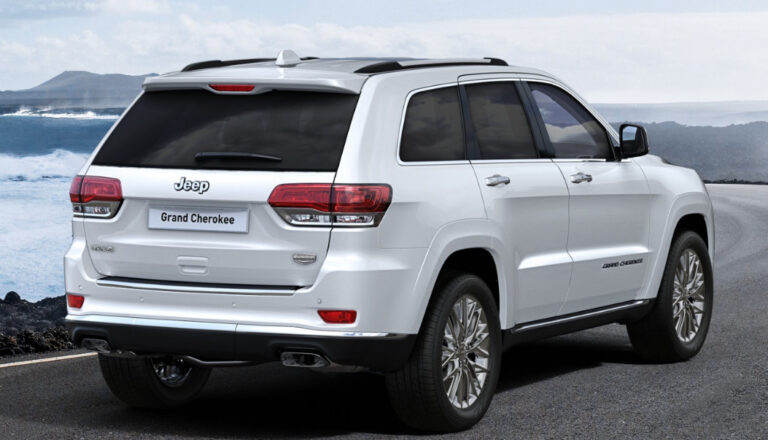Jeep Wrangler TJ Dana 44 For Sale: Your Ultimate Guide to an Essential Upgrade
Jeep Wrangler TJ Dana 44 For Sale: Your Ultimate Guide to an Essential Upgrade jeeps.truckstrend.com
The Jeep Wrangler TJ, produced from 1997 to 2006, holds a special place in the hearts of off-road enthusiasts. Renowned for its classic round headlights, robust frame, and coil-spring suspension, the TJ is an incredibly capable platform right out of the box. However, for those looking to push the limits, conquer more challenging trails, or simply run larger tires, a common bottleneck emerges: the stock axles. This is where the Jeep Wrangler TJ Dana 44 for sale enters the picture – a highly sought-after upgrade that dramatically enhances durability, capability, and peace of mind on and off the pavement.
This comprehensive guide will delve into everything you need to know about finding, evaluating, and purchasing a Dana 44 axle for your TJ Wrangler. Whether you’re upgrading a standard TJ or replacing a damaged Rubicon axle, understanding the nuances of these heavy-duty components is crucial for a successful and lasting modification.
Jeep Wrangler TJ Dana 44 For Sale: Your Ultimate Guide to an Essential Upgrade
What is a Dana 44 Axle and Why is it Desirable for a TJ?
At its core, a Dana 44 is a robust, medium-duty axle manufactured by Dana Incorporated (formerly Spicer). It’s a significant upgrade over the standard axles found in most TJ Wranglers: the Dana 30 in the front and the notoriously weaker Dana 35 in the rear.
The Weaknesses of Stock TJ Axles:
- Dana 30 Front: While adequate for light to moderate trails and tires up to 33 inches, the Dana 30 has a smaller ring and pinion and weaker axle shafts compared to a Dana 44. It can become a liability with larger tires, aggressive driving, or lockers.
- Dana 35 Rear: This axle is the primary reason most TJ owners seek an upgrade. Known for its small 7.625-inch ring gear, weak 27-spline axle shafts, and C-clip retention system, the Dana 35 is highly prone to failure when subjected to larger tires (especially 33 inches or more), lockers, or rigorous off-road use. A broken C-clip can lead to the entire axle shaft and wheel sliding out of the housing.
The Advantages of a Dana 44 Axle for a TJ:

- Superior Strength: The Dana 44 boasts a larger ring and pinion (typically 8.5 inches), a stronger housing, and more robust axle tubes. This translates directly to increased resistance to bending and breaking under load.
- Larger Axle Shafts: Most TJ Dana 44s come with 30-spline axle shafts (some aftermarket versions go up to 32), which are significantly stronger than the 27-spline shafts in the Dana 35.
- No C-Clips (TJ Rear Dana 44): A critical safety and strength improvement, the TJ Dana 44 rear axle uses a bolt-in axle shaft design, eliminating the problematic C-clip system of the Dana 35.
- Better Aftermarket Support: The Dana 44 platform has a vast array of aftermarket components available, including stronger chromoly axle shafts, a wider selection of gear ratios, and various locker options (air, electric, mechanical).
- Handles Larger Tires: With a Dana 44 (especially with upgraded shafts), TJs can confidently run 35-inch tires, and even 37-inch tires with proper setup and careful driving.
- Increased Durability and Peace of Mind: For serious off-roaders, the Dana 44 upgrade provides the confidence to tackle challenging obstacles without constantly worrying about axle failure.

It’s important to note that while many TJs were sold with the Dana 30/Dana 35 combination, the TJ Rubicon model (2003-2006) came factory-equipped with Dana 44 axles front and rear, complete with air lockers and 4.10 gearing. This makes Jeep Wrangler TJ Dana 44 for sale searches particularly common for those looking to emulate or upgrade beyond the Rubicon’s factory capabilities.
Identifying a Genuine TJ Dana 44 Axle

When searching for a Jeep Wrangler TJ Dana 44 for sale, knowing how to properly identify one is crucial to avoid costly mistakes. Not all Dana 44s are created equal, and specific TJ characteristics ensure a direct bolt-in fit.
Visual Cues and Identification Points:
- Differential Cover: A Dana 44 will have a distinct, somewhat rounded differential cover with 10 bolts holding it on. This differs from the 12-bolt Dana 30 front and the 10-bolt (but different shape) Dana 35 rear.
- Casting Numbers: Look for the "44" cast into the housing itself, usually near the differential pumpkin.
- Axle Tag: A small metal tag often bolted to one of the differential cover bolts can provide critical information about the axle, including the gear ratio and model.
- Drain Plug: TJ Dana 44 rear axles typically have a drain plug at the bottom of the differential housing, a convenient feature lacking on the Dana 35.
TJ-Specific Characteristics for Bolt-in Fitment:
- Width: Factory TJ Dana 44 axles (both front and rear) are approximately 60.5 inches wide from wheel mounting surface (WMS) to WMS. This specific width is essential for maintaining proper track width and compatibility with TJ suspension components.
- Mounting Brackets: Crucially, a true TJ Dana 44 will have the correct spring perches, control arm mounts, and shock mounts welded in the factory locations and at the correct angles for a TJ Wrangler. Axles from other vehicles (like XJs or Grand Cherokees) might be Dana 44s but will require significant fabrication to fit a TJ.
- Brake Compatibility: Ensure the axle includes brake mounts compatible with your TJ’s braking system, including ABS tone rings if your TJ is equipped with ABS.
Rubicon Dana 44 vs. Standard TJ Dana 44:
- Rear Dana 44: Both standard (optional) and Rubicon TJ rear Dana 44s are low-pinion designs. The main distinction is that the Rubicon version comes with a factory air locker.
- Front Dana 44: Only the TJ Rubicon came from the factory with a Dana 44 front axle. This is a highly desirable high-pinion (HP) Dana 44, which offers improved driveshaft angles and ground clearance compared to a low-pinion design. It also includes a factory air locker. If you find a "factory TJ front Dana 44 for sale," it’s almost certainly from a Rubicon.
Where to Find Jeep Wrangler TJ Dana 44 For Sale
Finding a good Jeep Wrangler TJ Dana 44 for sale can take some patience, but several avenues typically yield results:
-
Online Marketplaces:
- Facebook Marketplace & Craigslist: Excellent for local finds. Use specific search terms like "TJ Dana 44," "Wrangler Rubicon axles," or "Jeep TJ axle swap." Be prepared to travel for a good deal.
- Dedicated Jeep Forums: Websites like JeepForum.com, WranglerForum.com, and Pirate4x4.com often have "For Sale" sections where enthusiasts list parts. These communities are knowledgeable, and you might find more detailed descriptions.
- eBay: While possible, shipping large, heavy axles can be prohibitively expensive. It’s usually a last resort unless the seller is local.
-
Local Sources:
- Salvage Yards/Junkyards: A prime spot for finding factory take-off axles from wrecked or parted-out TJs, especially Rubicons. Call ahead and be specific about what you’re looking for.
- Off-Road Shops & Fabricators: Many shops that perform axle upgrades or custom builds might have used take-off axles from customers. They might also know where to source them.
- Local Jeep Clubs: Networking within your local off-road community can uncover leads. Members often upgrade their axles and sell their old ones.
-
Specialized Axle Builders: While primarily focused on new or custom-built axles, some companies might have used cores or complete used assemblies available.
Key Considerations When Buying a Used TJ Dana 44 Axle
Purchasing a used axle requires a thorough inspection to ensure you’re getting a reliable component and not inheriting someone else’s problems.
- Physical Condition:
- Rust: Surface rust is common and usually fine. Deep pitting, especially on the axle tubes, housing, or mounting points, can indicate structural compromise.
- Bends/Cracks: Use a straight edge along the axle tubes to check for bends. Inspect all welds (especially around the differential housing and mounting brackets) for cracks.
- Differential Cover: Check for severe dents or signs of leaks around the gasket or RTV.
- Seals: Look for oil leaks around the pinion seal (where the driveshaft connects) and at the ends of the axle tubes where the axle shafts exit.
- Mounting Brackets: Ensure all spring perches, control arm mounts, and shock mounts are intact, not bent, and in the correct positions for a TJ.
- Internal Specifications & Condition (If Possible):
- Gearing: Crucial! What gear ratio is installed (e.g., 3.73, 4.10, 4.56)? If you’re only replacing one axle, it must match your other axle’s ratio exactly. If replacing both, you have more flexibility. Ask the seller, and if possible, verify by counting teeth or checking the axle tag.
- Locker/Limited Slip Differential (LSD): Does it have one? Is it factory (like the Rubicon air locker) or aftermarket? Ask if it’s functional and if any air compressor/wiring is included.
- Axle Shafts: Are they stock (likely 30-spline) or upgraded chromoly shafts? Check for straightness and any damage to the splines.
- Bearings/Seals: While difficult to fully assess without disassembly, excessive play in the pinion or axle shafts can indicate worn bearings.
- Brakes: Assess the condition of the rotors, calipers, and pads. Factor in replacement costs if they’re worn.
- History and Source:
- Ask the seller why they are selling the axle.
- What vehicle did it come from?
- Was it involved in an accident?
- What kind of off-roading was the vehicle subjected to?
- Any known issues or repairs?
Installation and Integration
One of the major benefits of a factory Jeep Wrangler TJ Dana 44 for sale is its "bolt-in" nature. This means the axle’s dimensions, mounting points, and brake connections are designed to seamlessly integrate with your TJ’s existing suspension, steering, and braking systems.
- Direct Bolt-in: For a true TJ Dana 44, installation is relatively straightforward. It involves disconnecting the old axle (driveshaft, brakes, control arms, shocks, springs), rolling it out, and installing the new Dana 44 in its place.
- Tools and Challenges: While direct, expect challenges typical of working on older vehicles: rusted bolts, seized bushings, and potentially worn components that need replacement (e.g., ball joints, unit bearings on the front axle).
- Professional vs. DIY: If you have mechanical experience, a good set of tools, and a safe way to lift your Jeep, a DIY swap is achievable. However, if you’re unsure, professional installation by a reputable off-road shop is highly recommended to ensure safety, proper torque specs, and correct setup (especially if re-gearing).
- Gearing Match: Reiterate: If replacing only one axle, the gear ratio must match your existing axle. Failure to do so will lead to severe drivetrain binding and damage, especially when engaging 4WD.
Benefits and Challenges of the Upgrade
Benefits:
- Unleashed Potential: Allows you to confidently run larger tires (35s, 37s) and tackle more aggressive terrain.
- Enhanced Durability: Significantly reduces the risk of axle failure on the trail, preventing costly recoveries and repairs.
- Improved Performance: Opens up a wider range of locker options for superior traction.
- Increased Resale Value: A TJ with Dana 44 axles is far more desirable and holds its value better in the aftermarket.
- Peace of Mind: Drive harder, worry less.
Challenges:
- Cost: Even used Dana 44s are a significant investment. Factor in potential rebuild costs, new bearings, seals, and fluid.
- Hidden Damage: The risk of buying a used axle that has internal wear or damage not immediately visible.
- Finding the Right One: Locating a Dana 44 with the correct gearing, condition, and TJ-specific mounts can take time.
- Installation Complexity: While bolt-in, it’s still a major component swap that requires mechanical aptitude.
Practical Advice and Actionable Insights
- Do Your Homework: Before you start searching, know exactly what you need: front or rear, desired gear ratio, and any specific locker preferences.
- Inspect Thoroughly: Never buy an axle sight unseen if possible. Bring a flashlight and scrutinize every inch for rust, bends, cracks, and leaks.
- Ask Questions: Don’t hesitate to ask the seller detailed questions about the axle’s history, previous use, and any known issues.
- Budget for More: Assume you’ll need to replace seals, fluids, and possibly bearings or ball joints. Factor in the cost of new brakes or a professional inspection/installation.
- Patience Pays Off: The perfect Jeep Wrangler TJ Dana 44 for sale might not appear overnight. Be patient and wait for the right deal on a quality axle.
Jeep Wrangler TJ Dana 44 For Sale: Estimated Price Guide
Prices for used Jeep Wrangler TJ Dana 44 for sale can vary widely based on condition, included components (gears, lockers, shafts), and location. This table provides a general estimate:
| Axle Type & Origin | Condition | Gearing | Locker/LSD | Estimated Price Range (USD) | Notes |
|---|---|---|---|---|---|
| Rear Dana 44 (TJ Factory) | Poor (Core/Damaged) | Unknown | Open | $400 – $700 | Heavy rust, bent tube, needs full rebuild, likely new shafts/gears. Good for a rebuild project. |
| Fair (Used/Working) | Open | Open | $700 – $1200 | Moderate rust, functional, may need new seals, fluid, or minor parts. Ready for basic installation. | |
| Good (Clean Pull) | 3.73, 4.10 | Open | $1200 – $1800 | Clean, low rust, good seals, ready to install with minor prep. Often from a low-mileage rollover. | |
| Excellent (Built) | 4.56, 4.88+ | Aftermarket Locker/LSD | $1800 – $2500+ | Professionally rebuilt, upgraded shafts (e.g., chromoly), high-quality locker, fresh paint. Premium price for a "ready-to-rock" axle. | |
| Front Dana 44 (TJ Rubicon) | Poor (Core/Damaged) | Unknown | Non-functional Air Locker | $800 – $1500 | Heavy rust, bent, seized locker, needs full rebuild including ball joints/unit bearings. |
| Fair (Used/Working) | 4.10 | Air Locker (Needs Service) | $1500 – $2500 | Moderate rust, functional but may need compressor/air line work, general service. Expect to replace ball joints/unit bearings. | |
| Good (Clean Pull) | 4.10 | Functional Air Locker | $2500 – $3500 | Clean, well-maintained, working locker (verified), ready to install. Minor service items might be needed. | |
| Excellent (Built) | 4.10+ | Rebuilt/Upgraded Locker | $3500 – $5000+ | Freshly rebuilt, new ball joints/unit bearings, fully functional locker, chromoly shafts. Top-tier, ready-to-bolt-in option. | |
| Aftermarket Dana 44 (Used) | Varies | Varies | Varies | $2000 – $6000+ | Highly variable based on brand (e.g., Currie, Dynatrac), specific components (e.g., housing material, knuckles), and condition. Requires specific research into the brand and build. Often superior to factory. |
Note: These prices are estimates and can fluctuate significantly based on geographic location, current market demand, seller urgency, and the specific included components.
Frequently Asked Questions (FAQ) about Jeep Wrangler

